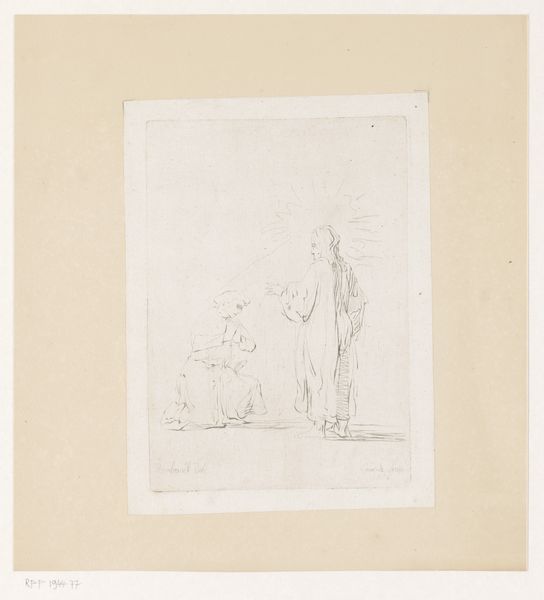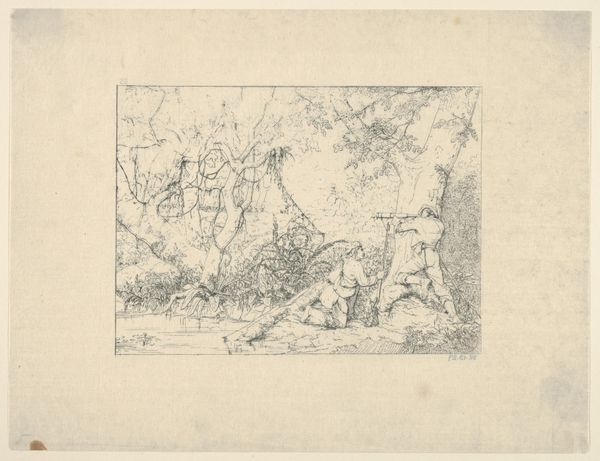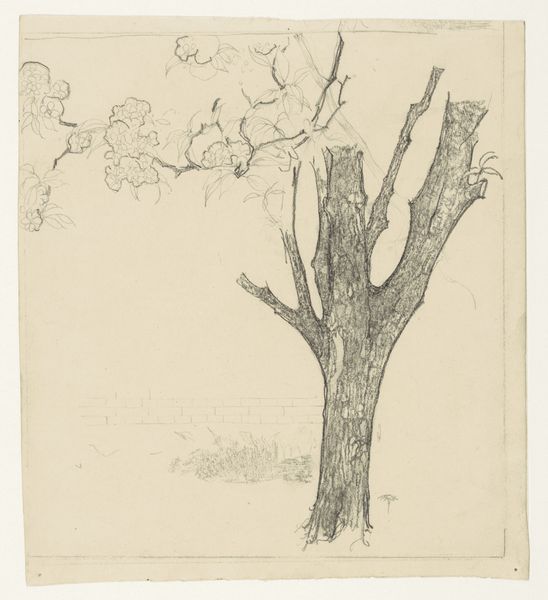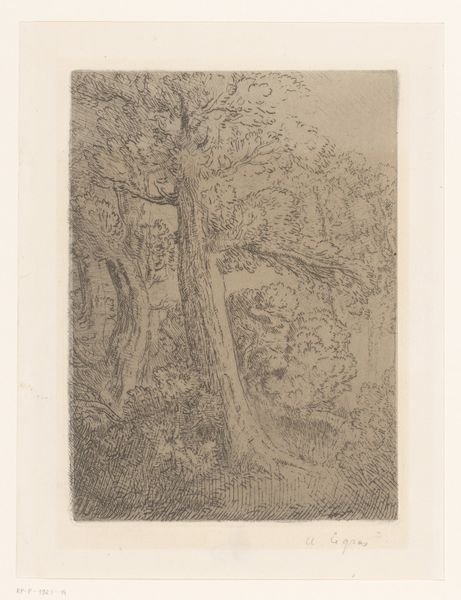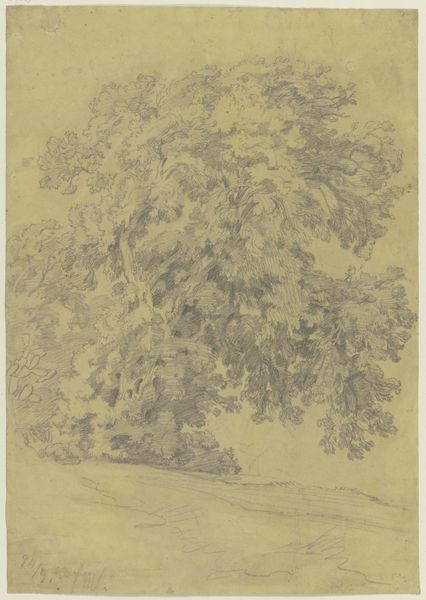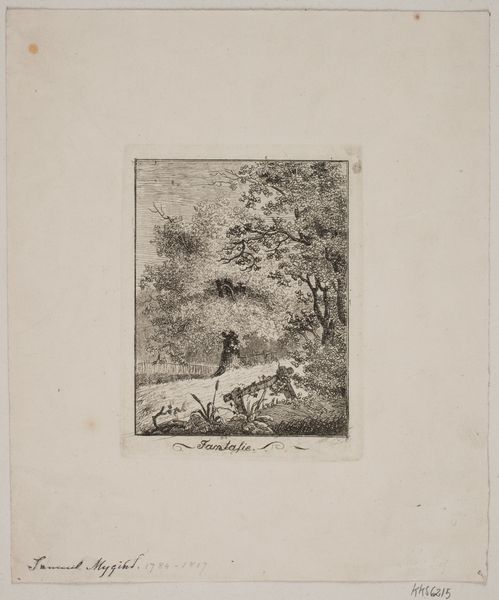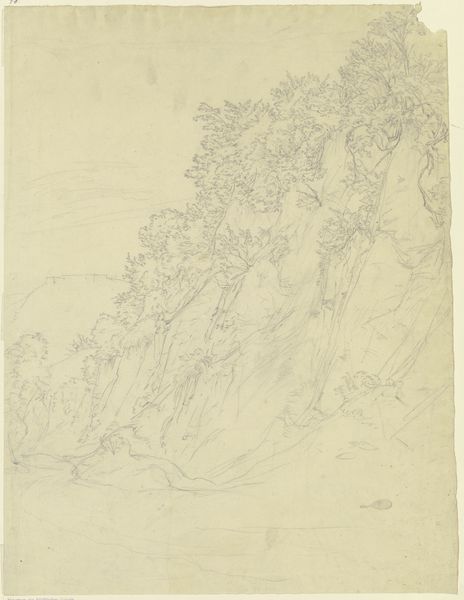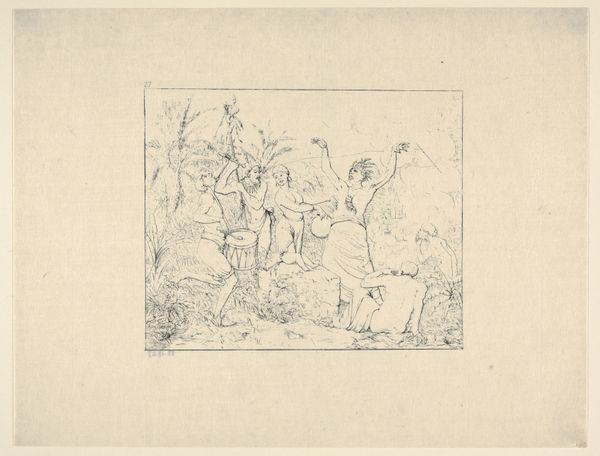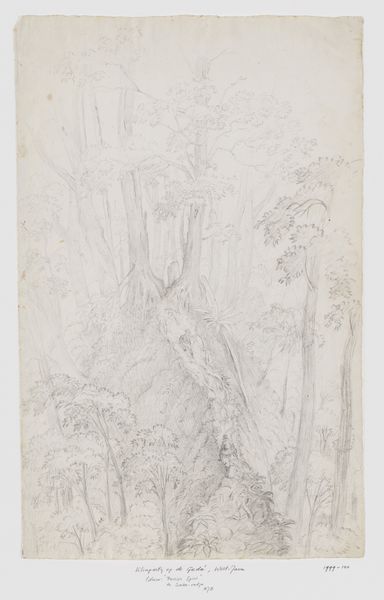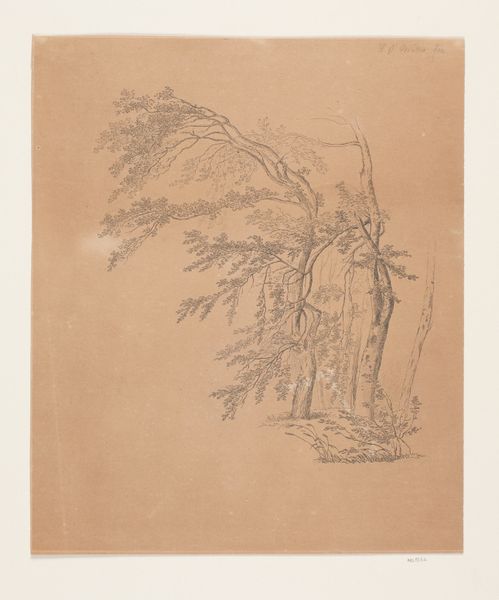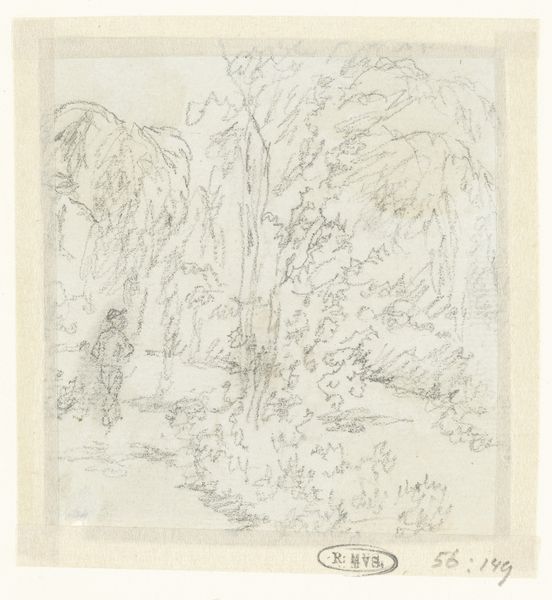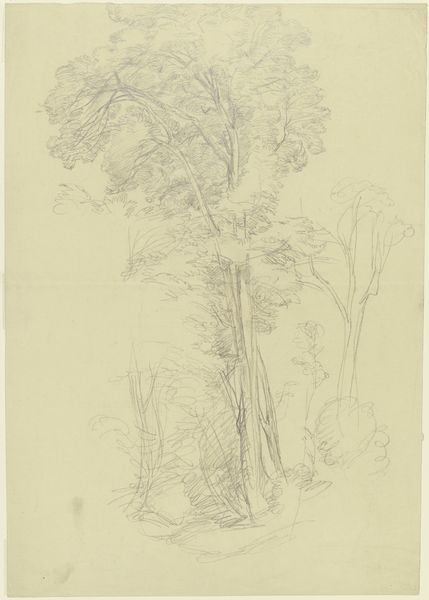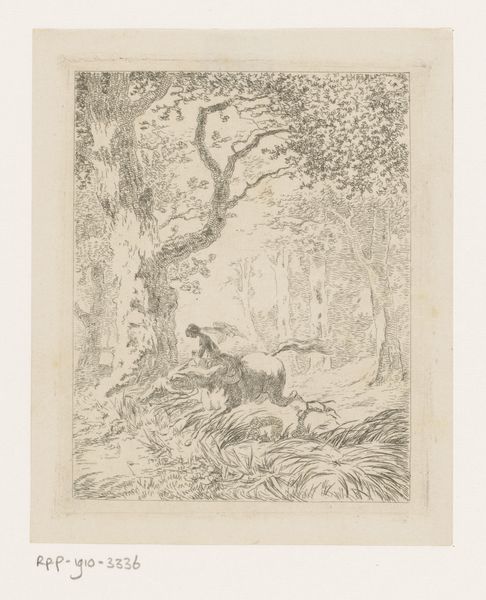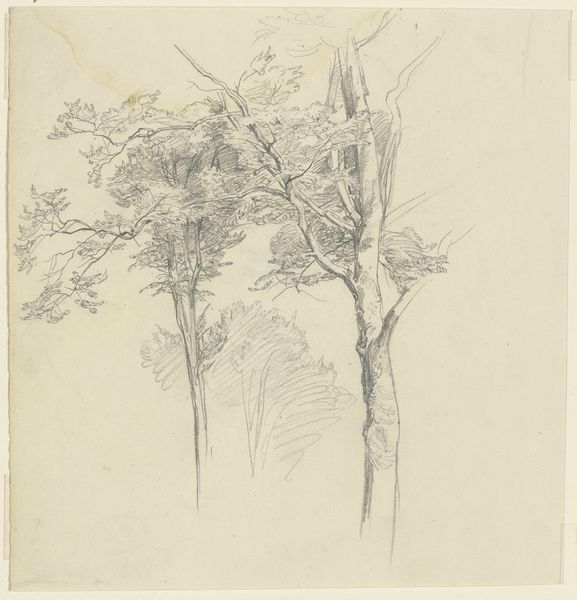
Dimensions: height 273 mm, width 215 mm
Copyright: Rijks Museum: Open Domain
Editor: Here we have "Boslandschap," or "Wooded Landscape," a pencil drawing from somewhere between 1840 and 1880 by Johannes Tavenraat. It's currently held in the Rijksmuseum. It feels very simple, almost like a study, but the composition with that tiny figure walking into the trees is quite engaging. What do you see in this piece from a more formalist perspective? Curator: What I appreciate most is the way Tavenraat uses line to create depth and texture. Notice how the density of the pencil strokes varies, creating areas of light and shadow that define the forms of the trees. Consider also the application of what appears to be some type of watercolor wash adding an additional depth and texture. Do you observe the intentional framing within the work itself? The artist meticulously contains their drawing through use of border line and limited tonality of the applied pencil medium. How do you read the artist's use of semiotics to construct and compose this representational form? Editor: Yes, I see it now. The border really contains the work, creating a sense of intimacy, while the varied pencil strokes, in a kind of layering, certainly gives dimension to the forest. It almost becomes tactile. You ask about how to read the semiotics, which leads to so many ways we can interperet it. It could symbolize limits but freedom, simultaneously? Curator: Precisely! The structural interplay between constraint and release – that is to be contained by this box while inviting endless possible interpretations from those willing to view it -- it gives the work its dynamism. The composition isn't just a depiction of a landscape. Editor: So, by focusing on those formal elements – the line, the tone, the composition – we can see how Tavenraat creates meaning and evokes something deeper than just the visual scene. It goes far beyond the physical representation and opens infinite creative narratives. Curator: Indeed. The aesthetic value exists autonomously, even independently from any historical or cultural context, right here in the artwork's materiality. The material structure speaks for itself. It exists here in real time, not an appropriation of some romantic fantasy. What did you gain from looking at the materials, semiotics, structuralism, and philosophy? Editor: By understanding the physical elements, one comes closer to unlocking and defining the aesthetic representation intended by the artist, creating that unique story. I like that idea!
Comments
No comments
Be the first to comment and join the conversation on the ultimate creative platform.
